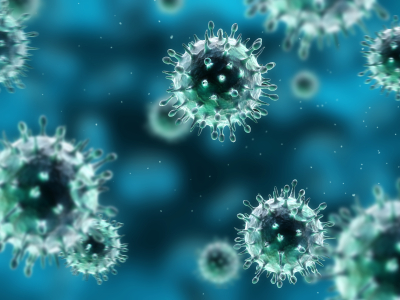
Months into the COVID-19 pandemic, we still have limited knowledge of the SARS-CoV-2 virus, and no effective treatment or vaccine. A major obstacle for scientists trying to understand the SARS-CoV-2 virus is the lack of appropriate cell models. Most of the studies published so far are based on cancer cell lines or animal models that have been engineered to express the human SARS viral entry receptor—ACE2. However, there are a many limitations to using these as models for studying human virus infection:
- The biology of animal cells is different than human cells, and may not capture key aspects of viral infection that occur in humans.
- Common cancer cell lines used in viral research contain only one cell type, while most human organs and tissues contain multiple cell types with varying expression of ACE2.
- Most human cancer cell lines carry tumor-associated mutations, such as p53, which may affect viral replication, and therefore do not reflect viral biology in non-tumor cells.
- Some cancer cell lines have mutations in immune response genes, therefore may not capture antiviral responses that occur in the human body.
With the limitations of current models in viral research, there is an urgent need for human cell models that can reflect the true biology of human tissues. Researchers at Weill Cornell Medicine may have developed a solution. Their recent publication in Cell Stem Cell presents multiple cell and organoid models derived from human pluripotent stem cells that can be used as models to study SARS-CoV-2 viral infection and response.
The authors first directed human pluripotent stem cells to differentiate into eight different cell types. They found that ACE2 was widely expressed in many cell types, including pancreatic cells, liver organoids, and cardiomyocytes. As expected, those ACE2-expressing cells could also be infected by a SARS-CoV-2 pseudovirus (an engineered version of the real SARS-CoV-2 that is safer and trackable). However, some of the ACE2-expressing cells (e.g., endothelium, macrophages, and cortical neurons) were not permissive to SARS-CoV-2 pseudovirus infection, suggesting that perhaps other factors besides ACE2 contribute to viral entry.
Among the various differentiated cell types, the pancreatic cells and liver organoids are of particular interest due to a strong link between COVID-19 and diabetes. Studies have shown that COVID-19 patients with type 2 diabetes have higher mortality than those without diabetes. Moreover, there is evidence that COVID-19 could induce new-onset diabetes. This suggests that SARS-CoV-2 can enter and infect pancreatic and liver cells, which are the main organs controlling insulin and blood glucose levels.
The researchers found that SARS-CoV-2 can indeed infect hPSC-derived pancreatic and liver organoids. The infection also stimulates production of certain chemokines, which are known to trigger a deadly autoimmune response. The increase in chemokines examined in the organoids is similar to what is seen in autopsy samples from COVID-19 patients.
This study demonstrates that hPSC-derived cells and organoids can recapitulate the biology of SARS-CoV-2 infection in adults. There is hope that this new model platform can be useful for screening and evaluating antiviral drugs.
Interested in tools and resources for viral research? Visit our web page on SARS-CoV-2 Research, Vaccine, and Therapeutic Development.
Related Posts
Latest posts by Johanna Lee (see all)
- Can AI Replace High-Throughput Screens for Drug Discovery? - April 30, 2024
- How Avian Influenza Crosses Species - February 22, 2024
- Macrophages: The Unsung Heroes of Immune Response and Biologic Drug Development - December 28, 2023
